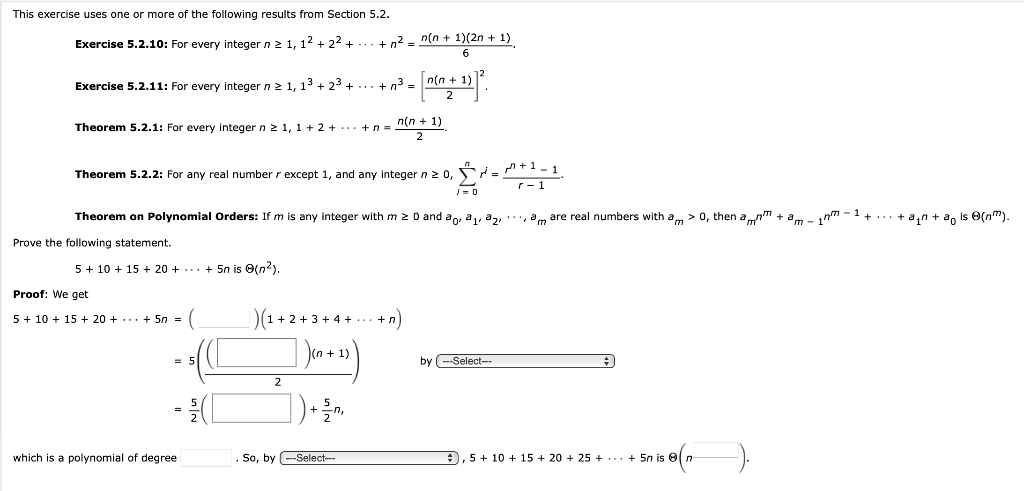Home /
Expert Answers /
Other Math /
this-exercise-uses-one-or-more-of-the-following-results-from-section-5-2-exercise-5-2-10-f-pa653
(Solved): This exercise uses one or more of the following results from Section \( 5.2 \). Exercise 5.2.10: F ...
This exercise uses one or more of the following results from Section \( 5.2 \). Exercise 5.2.10: For every integer \( n \geq 1,1^{2}+2^{2}+\cdots+n^{2}=\frac{n(n+1)(2 n+1)}{6} \). Exercise 5.2.11: For every integer \( n \geq 1,1^{3}+2^{3}+\cdots+n^{3}=\left[\frac{n(n+1)}{2}\right]^{2} \) Theorem 5.2.1: For every integer \( n \geq 1,1+2+\cdots+n=\frac{n(n+1)}{2} \). Theorem 5.2.2: For any real number \( r \) except 1 , and any integer \( n \geq 0, \sum_{i=0}^{n} r^{i}=\frac{r^{n+1}-1}{r-1} \). Theorem on Polynomial Orders: If \( m \) is any integer with \( m \geq 0 \) and \( a_{0}, a_{1}, a_{2}, \cdots, a_{m} \) are real numbers with \( a_{m}>0 \), then \( a_{m} n^{m}+a_{m}-1^{n^{m}}-1+\cdots+a_{1} n+a_{0} \) is \( \Theta^{m}\left(n^{m}\right) \). Prove the following statement. \[ 5+10+15+20+\cdots+5 n \text { is } \Theta\left(n^{2}\right) . \] Proof: We get \[ 5+10+15+20+\cdots+5 n=(\quad)(1+2+3+4+\cdots+n) \] \[ \begin{array}{l} =5\left(\frac{(1)}{2}\right)+\frac{5}{2} n \\ =\frac{5}{2}(n+1) \end{array} \] by which is a polynomial of degree . So, by I
